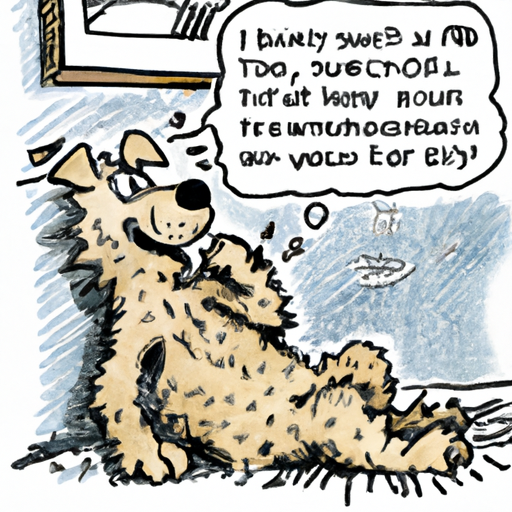Understanding Your Dog’s Shedding
As a caregiver to your beloved four-legged friend, you might often find yourself wondering about the changes your pet goes through. One of these changes is shedding. Yes, your dog does itch when shedding. This is a natural process that happens in all dogs, regardless of breed or size. Shedding is your dog’s way of removing old, damaged, or extra fur. This process is usually accompanied by itching, which is a normal reaction. However, excessive itching could be a sign of underlying health issues.
The Science Behind Your Dog’s Itching and Shedding
You might have noticed that your dog tends to scratch more during certain periods of the year. This is because dogs have a natural shedding cycle that can be influenced by several factors:
-
Seasons: Dogs naturally shed more during spring and fall. This is their body’s response to changes in daylight hours, which stimulate hair growth and shedding.
-
Breed: Some breeds shed more than others. For instance, breeds with double coats like the Siberian Husky shed heavily, while breeds with hair instead of fur, like the Poodle, shed less.
-
Health: If your dog is excessively shedding and itching, it might be a sign of health issues like allergies, parasites, or skin infections.
| Factors Influencing Shedding | Examples |
|---|---|
| Seasonal Changes | Spring and Fall |
| Breed Specific | Siberian Husky, Poodle |
| Health Conditions | Allergies, Parasites, Infections |
How to Manage Your Dog’s Itching and Shedding
-
Regular grooming: Brush your dog’s fur regularly to remove loose hairs before they end up on your furniture or floor.
-
Healthy diet: Feed your dog a balanced diet rich in omega-3 fatty acids, which promote a healthy coat.
-
Check for parasites: Regularly check your dog for fleas or ticks that could cause excessive itching and shedding.
-
Consult a vet: If your dog’s itching and shedding seem excessive or are causing your dog discomfort, consult with a veterinarian.
When Should You Be Concerned?
While it’s normal for your dog to itch and shed, excessive itching could be a sign of an underlying issue. If you notice any of the following symptoms, it’s time to consult a vet:
- Your dog is itching so much that it’s causing skin damage or hair loss
- Your dog seems uncomfortable or in pain
- The shedding is accompanied by other symptoms such as changes in appetite, behavior, or bowel movements
Home Remedies for Dog Itching
While it’s always important to consult with a vet for serious issues, there are a few things you can do at home to help alleviate your dog’s itchiness:
-
Oatmeal baths: Oatmeal has anti-inflammatory properties that can soothe your dog’s itchy skin.
-
Coconut oil: Applying coconut oil to your dog’s skin can moisturize and soothe itchiness.
-
Aloe vera: Aloe vera is known for its soothing properties and can be applied to your dog’s itchy spots.
Frequently Asked Questions
- Why does my dog itch more during shedding season?
This is due to the increase in loose fur, which can irritate your dog’s skin and cause them to itch.
- How can I tell if my dog’s itching is normal or a sign of a health issue?
If your dog’s itching is causing skin damage, hair loss, or seems to be causing discomfort, it’s time to consult a vet.
- How often should I groom my dog during shedding season?
This depends on the breed of your dog and the amount they are shedding. However, daily brushing is usually beneficial during shedding season.
- Can I prevent my dog from shedding?
Shedding is a natural process for dogs and can’t be completely prevented. However, regular grooming and a healthy diet can help manage shedding.
- What home remedies can I use for my dog’s itching?
Oatmeal baths, coconut oil, and aloe vera can all help soothe your dog’s itchy skin. However, always consult with a vet for serious issues.



